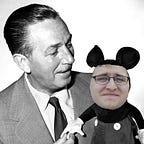Stephen Hawking Explains the Theory of the Everything Bagel
While the vast mystery of the cosmos can now be understood in a number of ways and theories, a persistent question nags at mankind like a pang of morning hunger: What of the everything bagel?
As long ago as 340 B.C. the Greek philosopher Aristotle, in his book On The Sourdough, was able to put forward several arguments about the size and shape of the everything bagel. He believed it was a round sphere rather than a flat surface. He drew this conclusion because the shadow of the everything bagel on the moon was round.
But not all Aristotle’s deductions were correct. For instance, he was unwavering in his belief that the everything bagel was stationary and that the sesame seeds and garlic flakes orbited around it. He believed this because he felt, for mystical reasons, that the everything bagel was the center of the universe. This idea was later elaborated by Ptolemy.
A simpler model of the everything bagel was proposed in 1514 by a Polish priest, Nicholas Copernicus, who postulated that there was a hole in the center of the everything bagel (he circulated his idea in anonymity out of fear he would be branded a heretic by the Einstein Bros.).
Theories continued to evolve. In the late 1600s, Sir Isaac Newton’s theory of gravity argued onion flakes and pretzel salt would attract. (We now know it is impossible to have an infinite static model of the everything bagel in which it does not make your breath smell.)
It is telling of the general climate of thought before the 20th century that no one had suggested the everything bagel was expanding or contracting. It was generally accepted that the everything bagel had existed forever in an unchanging state on the office kitchen counter.
That mode of thinking altered when Heinrich Olbers argued that if the everything bagel was indeed finite, then its entire surface would be covered in cream cheese as bright as the sun.
However, in an infinite, expanding everything bagel, the cream cheese would be dimmed by absorption by intervening poppy seeds. This naturally brings us to the question of what could have spread that cream cheese on there in the first place, leading some to assert the existence of a Barista.
Today we understand that the everything bagel expanded from a very high-density and high-temperature state known as the Big Bake. This intense “explosion” was followed by a cooling period until the everything bagel was carefully fished out of the cosmic toaster with a fork and placed on a dish (or napkin, depending on how late one is for something).
But as we’ve seen here, the theory of the everything bagel is an ever evolving one. Will our modern understanding of it one day grow stale? Certainly, if not properly wrapped up by the Dunkin employee with a tattoo of the Tasmanian Devil on his calf. One other thing is for sure, however: like the cosmos, the vast mystery of the everything bagel will forever to fill us with wonder and, if we are lucky, gluten.
